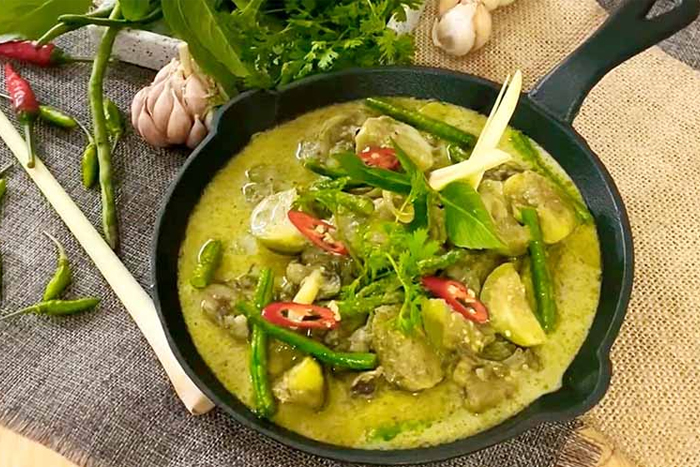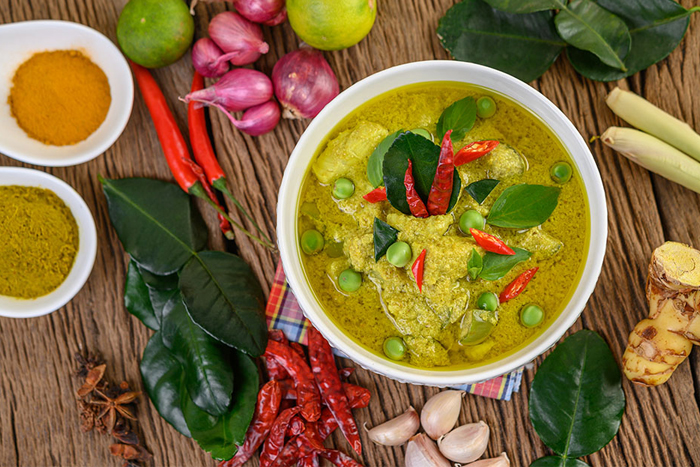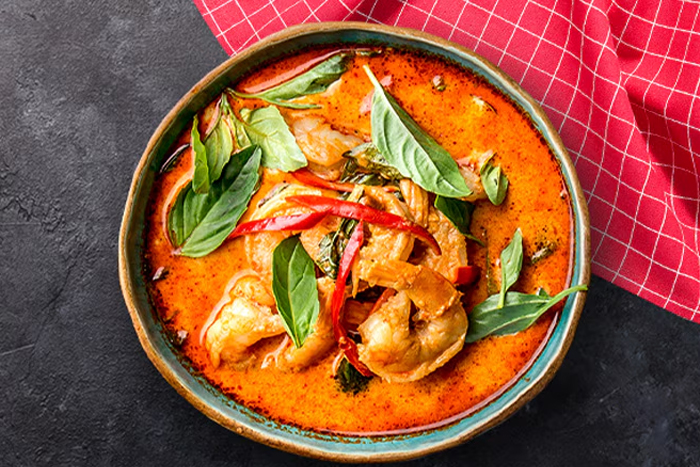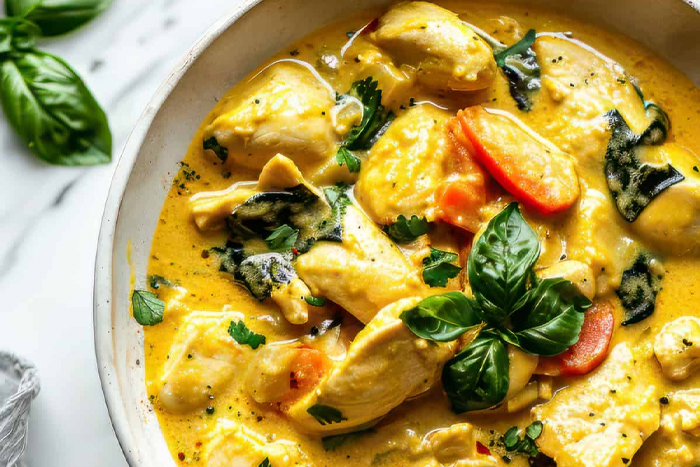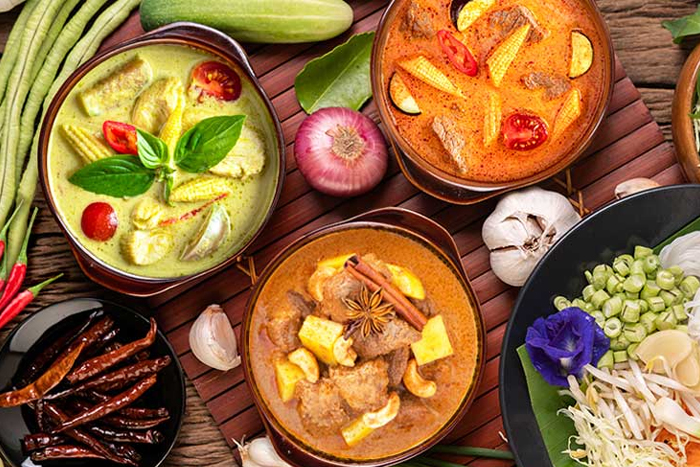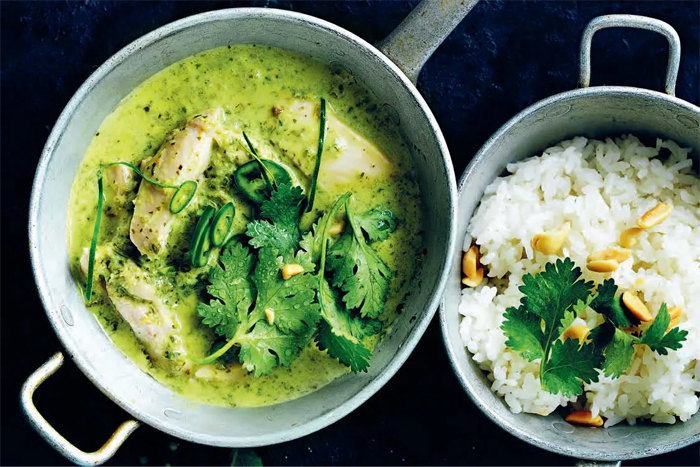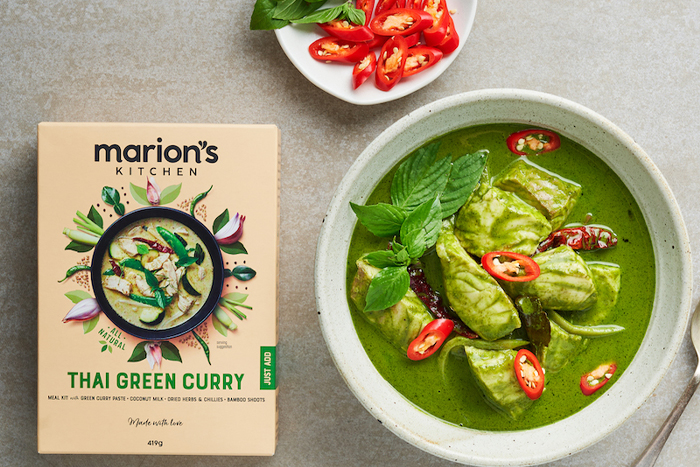Thailand's culinary landscape is a tapestry of flavors, textures, and aromas that have captivated food lovers from around the globe. Among its many gastronomic treasures, green curry stands out as a dish that encapsulates the heart and soul of Thai cuisine. This aromatic and complex curry has a rich history dating back to the early 20th century, evolving from the kitchens of the Thai royal court to become a beloved national dish. As you embark on your Thai adventure, placing green curry at the top of your must-try list will not only tantalize your taste buds but also offer a deeper understanding of Thai curry - Thailand's culinary heritage.
1. Introduction to green curry in Thai cuisine
First and foremost, it's important to remember that curry is not defined as a single spice, but rather as a blend of several spices. Unlike Indian curry, which comes in powder form (because it's made from dried spices), Thai curry is in the form of a paste. In fact, the various types of Thai curry are primarily composed of fresh ingredients such as shallots or fresh lemongrass.
Thai cuisine features three main types of curry: yellow, red, and green. Green curry, known as "Kaeng Khiao Wan" in Thai, is unique among these for its use of fresh green chilies, typically bird's eye chilies. These chilies, along with other ingredients like kaffir lime leaves and zest, Thai basil, fresh coriander leaves, and kaffir limes, give the curry its distinctive green color and vibrant flavor profile.
2. Green curry: The basic ingredients of Thai curry pastes
All Thai curries share a common base of ingredients: chilies, galangal, garlic, onions, lemongrass, coriander seeds, salt, and pepper. Shrimp paste is also widely used in crafting all types of curry found in Thailand's iconic dishes. Additional aromatics are then added depending on the desired curry type, and everything is pounded in a mortar until it forms a paste.
What makes Thai curry unique? The key lies in the types of chilies used. Moreover, each curry incorporates unique aromatics that can enhance its color - for instance, tomatoes in red curry or herbs in green curry. These variations in ingredients not only affect the color but also contribute to each curry's distinct flavor profile.
3. Different types of Thai curry pastes
a. Red curry
Red curry (known as "Kaeng Phet" in Thai) gets its color from dried red chilies. Along with the basic curry ingredients (coriander seeds, galangal, garlic, lemongrass, shrimp paste), it also includes other aromatics like cumin seeds and shallots. Some recipes add tomatoes or chili powder to enhance the red color.
b. Yellow curry
Thai yellow curry, known locally as "Kaeng Kari," shares many common elements with its red counterpart, but has some distinctive features that set it apart. Its distinctive color comes from a large amount of turmeric. Dried red chilies are used in smaller quantities than in red curry. Cardamom, cinnamon, cloves, and nutmeg may also be included in yellow curry pastes.
c. Tips for travelers
When it comes to the heat levels of Thai curries, there's often a misconception about which color packs the most punch. Let's explore the spice spectrum of yellow, red, and green Thai curries:
Yellow curry (Mildest): Generally the least spicy of the three. It uses fewer chilies and more turmeric, giving it a milder flavor profile.
Red curry (Medium): Typically hotter than yellow but less spicy than green. It's made with dried red chilies, which are often less intense than fresh ones.
Green curry (Hottest): Usually the spiciest of the three. It's made with fresh green chilies, particularly bird's eye chilies, which pack a lot of heat.
However, it's important to note that the spiciness can vary depending on the recipe and the chef's preparation. The amount of chilies used, whether fresh or dried, and other factors can affect the heat level of any curry.
Many travelers assume red curry is the spiciest Thai curry due to its vivid color. However, green curry is actually the hottest. Fresh green chilies are much spicier than dried red ones. Yellow curries are generally the mildest and least spicy Thai curries, as they usually contain less chili. It's worth noting that while green curry is typically the spiciest, you might occasionally encounter a surprisingly hot red or yellow curry. The heat level can vary from dish to dish depending on the amount of chili used in making the curry paste.
A useful tip for enjoying Thai curries:
To temper the spiciness of chilies, Thai cooks often incorporate coconut milk or cream into their curry preparations. This isn't just for flavor; coconut milk contains fats that can effectively neutralize capsaicin, the compound responsible for the burning sensation of chilies. The fat in coconut milk dissolves and distributes the capsaicin, spreading out the heat and making it less intense on the palate. This technique not only reduces spiciness but also adds richness and depth to the curry's flavor profile. For home cooks, adding more coconut milk is an easy way to adjust the spice level if a curry turns out too hot. This balance of heat and creaminess is a key factor in the global popularity of Thai curries, offering a complex and adjustable flavor experience.
4. How to eat green curry like a local?
When it comes to enjoying green curry like a local, remember that it's typically eaten with rice to temper the heat and soak up the flavorful sauce. Don't be afraid to use your spoon and fork to mix the curry with the rice for the perfect bite. If you're feeling adventurous, try eating with your right hand as some locals do – but be prepared for a messy (and delicious) experience!
For those inspired to recreate this culinary masterpiece at home, many cooking courses in Thailand offer classes focused on green curry. You'll learn to pound the curry paste by hand, select the freshest ingredients, and balance the flavors to perfection. Even if you can't attend a class, don't be discouraged – many markets sell pre-made curry pastes that can help you whip up a tasty version in your own kitchen.
As you travel through Thailand, you'll discover that green curry, like many Thai dishes, has regional variations. In the south, you might find a version made with fish and local herbs, while northern variations might incorporate different types of eggplants or bamboo shoots. Modern Thai chefs are also putting their spin on this classic, creating fusion dishes like green curry pizza or green curry ice cream for the adventurous foodie.
Green curry captures the heart of Thai cuisine, showcasing the country's culinary traditions and cultural heritage. For any trip to Thailand, it's a must-try dish that will awaken your taste buds to the complex flavors of authentic Thai cooking. Trying green curry is a great way to experience authentic Thai food culture. Whether you prefer it mild or spicy, this dish provides a true taste of Thailand's culinary traditions.
Where to find the best green curry in Thailand?
To experience the best green curry Thailand has to offer, venture beyond your hotel restaurant. In Bangkok, try long-standing establishments like Ruen Mallika or Err Urban Rustic Thai. For a more local experience, brave the bustling streets and follow your nose to food stalls where generations of cooks have perfected their recipes. In Chiang Mai, seek out small family-run eateries that often serve regional variations of this beloved dish.
In which dishes can green curry be used?
Green curry Thailand is a versatile ingredient in Thai cuisine, finding its way into numerous dishes. It's most commonly used as a base for curry dishes with chicken, beef, pork, seafood, or vegetables. The curry can also be incorporated into fried rice or noodle soups for added flavor. Chefs often use it as a sauce for grilled meats or fish, or as a flavor enhancer in stir-fries. In fusion cooking, green curry appears in unexpected dishes like pasta. It can serve as a marinade for meats before grilling, adding depth and Thai-inspired flavors. Some creative cooks even use it in dips or spreads, showcasing its adaptability beyond traditional curry dishes.

